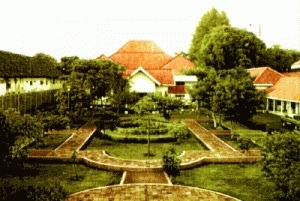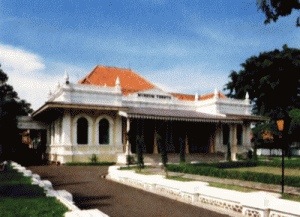The Textile Museum was founded in 1976 as the result of a concerted effort spearheaded by the Governor of Jakarta at that time, Ali Sadikin. It was established in honor of Mme. Tien Soeharto’s First Lady, who officiated at the opening on June 28, 1976.
By the mid 1970s, the use of textiles, the understanding of their use, and the quantity and quality of production were very evidently in decline. Some had even become extremely rare. This motivated some of Jakarta’s leading citizens to established an institution dedicated to the preservation and study of Indonesian textiles. The Himpunan Wastraprema (Society of Textile Lovers) donated a foundation collection of 500 high quality textiles. The Jakarta municipality provided accommodation in a lovely old building in the Tanah Abang district of Jakarta.
The core of the building now houses the Textile Museum was built in the early 19th century by a Frenchman and then sold to Abdul Aziz Mussawi Al Katiri the Turkish Consul in Jakarta. In 1942 the property was sold to Dr. Karel Christian Crucq and beginning 1945, was used as the headquarter of the “Pioneer Youth Front” and Civil Defense Force in the struggle to defend Indonesia’s newly proclaimed independence. For this latter reason, the building is listed as a historical monument.
In 1947 the property was owned by Lie Sion Pin who rented to the Department of Social Affair which modified it into an institution for aged people. In 1962 the property was acquired by the Department of Social Affairs. Initially used as offices, it was turned into an employee hostel in 1966. Finally in 1975, it was officially handed over to DKI Jakarta City Government by the Minister of Social Affair. Governor Ali Sadikin decided that the need to conserved Indonesia’s textile traditions was greater than the city’s need for archival storage space, for which this building had been earmarked, and so the Textile Museum was born.



One thought on “WASTRAPREMA”